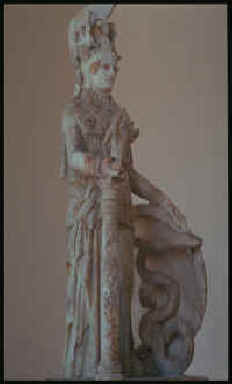
Oresteia Questions
 |
FILM: Wednesday 1-4 PM, Max
Kade: Euripides, Iphigeneia in Aulis. Euripides lived and wrote a
generation and a half later than Aeschylus. His views on nature, the
gods, the social order, and women are different from Aeschylus' as are his
developments of character. As you watch the film: 1) Notice
Euripides' depiction of women and slaves. 2) Notice the dialogues between
Agamemnon and Menelaus and the values held therein -- how different are
they from those of Aeschylus and Herodotus? 3) What is Euripides' idea of
the sacred and the Gods? 4) Is Iphigeneia a hero? 5) How are Odysseus and
Achilles understood as characters -- do they appear to be like the heroes
we meet in the Iliad? PLEASE NOTE: These questions are for the
Euripides class next week. But this will be your only chance to see
the film. So, think about them!
|
| Aeschylus Questions:
Day 1 1. Is Aeschylus like Herodotus, Heraclitus, or Anaximander in the way he thinks on human nature, moral order, justice, etc.? What grand themes that we have met before are taken up here, and how are they treated? 2. Many scholars believe that ancient Greek drama grew out of ritual. In fact, the word drama comes from the word dromenon. Can you find any moments of ritual, or ritual structure in the Oresteia? 3. Trace the family tree of Agamemnon back to its furthest ancestry. Look particularly at Ouranos and Gaia, Kronos and Rhea, Zeus, Pelops and Tantalus, Atreus and Thyestes. What major themes carry through the family line? What is the significance of them in this play? |
5.The Agamemnon is a play that is driven by
gigantic forces expressed in omens, oracles, dreams and images serving as
symbols (E.G. light/dark, liquids, nets, etc.) Taking one of these
forms of expression, work it through the text. Try to understand its
power and its function in the play (s).*
6. What is the meaning and function of the omen of the eagles and pregnant hare in the Agamemnon?* 7. What is the function of Cassandra in the Agamemnon? Does she bear any relation to Helen or Iphigeneia? What does her character tell us about a changed relation to the sacred?*
|
| Day 2
8. Describe, using the texts of the Agamemnon and the Eumenides, how language changes its nature through the Trilogy. Look particularly at the trial scene in the Eumenides between Apollo and the Furies. Has the concept of Dike changed from the Agamemnon? How does the transformation of Dike relate to the change in language?* 9. How does Athena persuade the Furies to give up their ancient rights? Why do they capitulate to her?* 10. Look at the character of Orestes in the Libation Bearers. What does his portrayal tell you about a) the growth of personality b)insanity c) the kouretes. *
|
11. Who is Clytemnestra? What is her relation to a matricentric, ritual world? The world of Zeus and the Lympians? How does she function in the Agamemnon and Libation Bearers? Do you sympathize with her or not, or both. Why?* |